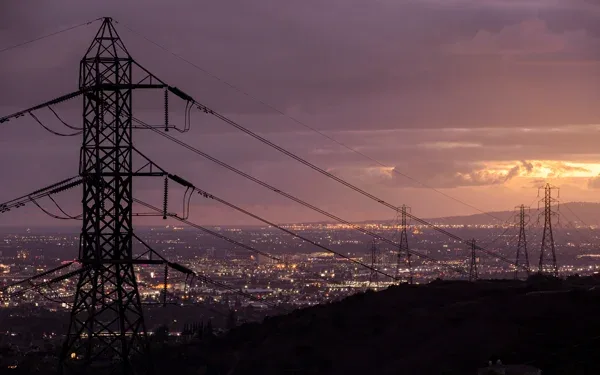Strengthening the grid is enhancing summer reliability

Since joining the California Independent System Operator in October 2020, I’ve witnessed remarkable progress in strengthening California’s electric grid and enhancing our summer readiness. Thanks to the dedicated efforts of the ISO, our partners in state government, utilities, and the broader energy industry, the grid today is significantly more resilient and better prepared to meet the demands of extreme weather.
One clear sign of progress: grid operators have not issued a Flex Alert asking consumers to voluntarily conserve energy since September 2022. That’s a notable shift from the ten Flex Alerts in 2020, eight in 2021 and eleven in 2022.
This transformation was driven in part by the challenges we faced in the summer of 2020, when grid operators were forced to implement brief rotating outages to maintain reliability during an unprecedented August heat wave. The moment underscored the urgency of action – and we responded.
As we are now beginning another summer with above normal temperatures in the forecast, I am proud to report that the bulk electric system managed by the California Independent System Operator is much stronger and more resilient.
Consider these improvements:
- Since 2020, more than 24 gigawatts (GW) of new generation capacity have been added to the grid, including approximately 7 GW last year alone. This new capacity includes more than 12 GW of battery storage that has been a game changer for meeting peak demand when the sun is setting and solar energy moves off the system.
- Coordination and collaboration between the ISO and California energy agencies has been greatly enhanced. This has been built primarily around our December 2022 Memorandum of Understanding that helped synchronize load forecasting, power and transmission planning, interconnection queuing and procurement of new resources. This enhanced coordination has been essential to onboarding the thousands of megawatts of new generating capacity and battery energy storage that have come online in recent years. The agreement will continue to guide our approach to ensuring reliability and resource adequacy in California.
- The state established its Electricity Supply Strategic Reliability Reserve Program in 2022. The program offers up to 3,000 megawatts of emergency capacity to deploy only in extreme conditions.
- We now have a much more efficient interconnection process after our comprehensive suite of reforms was approved by the Federal Energy Regulatory Commission (FERC) in October 2024. Before our extensive stakeholder initiative that resulted in these reforms, our interconnection queue had become so inundated by applications, many of which were not consistent with state priorities, that it had become impossible to process them efficiently. The reforms have already had a substantial positive impact on our procedures, removing what I refer to as friction from the system that was impeding timely onboarding of new resources.
- To keep pace with all the new resources being onboarded, the ISO’s transmission planning process has also been accelerated. Over the last three years, we’ve recommended 105 transmission upgrades, totaling an estimated $18.2 billion in investment over the next 15 years. We have also adopted an innovative subscriber-based model, approved by FERC in 2024, that enables developers to fund transmission projects through generator-backed subscriptions rather than traditional cost allocation.
- We are also actively engaged in several inter-regional transmission projects. These will access clean-energy resources identified in the California Public Utilities Commission’s resource planning efforts that will help deliver new generating resources and support reliability for utilities in other states.
- Reliability in the West has been further enhanced by the success of the ISO’s Western Energy Imbalance Market (WEIM). The real-time market has been in operation since 2014. Optimizing supply and demand in 15-minute and 5-minute intervals, the WEIM today spans 22 market participants in ten states. It leverages the significant transmission connectivity and resource diversity across parts of the West, which is particularly valuable during extreme weather events. Over its ten years of life, the WEIM has also delivered more than $7 billion in financial savings to market participants and their customers.
- And we are now working to extend a new day-ahead market platform to others in the West. Fully approved by FERC in 2024, the Extended Day-Ahead Market will expand our ability to optimize supply and demand in the day-ahead timeframe. This will further enhance market efficiency and reliability and reduce costs for the ratepayers of participating utilities.
- Last but not least, we are working with our partners in government and industry to increase the role of flexible loads and virtual power plants in supporting reliability within our market footprint. These efforts can bring significant positive results for both affordability and reliability.
At the California ISO, we recognize that despite having taken all these big steps forward, more hard work remains for meeting the pace of new resource development, growing electricity demands and the state’s ambitious energy policy objectives. As part of that work, we are continuing to improve how we plan and coordinate, while also looking for smart ways to keep costs down for electricity consumers.
Summer can always bring challenges to the grid, especially with more frequent heat events and the wildfire threat. For all the reasons listed above and more, we are much better equipped to deal with them than we were just a few short years ago.


